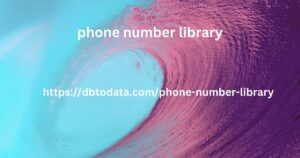The first thing you need to do before you start designing is to identify your target audience . It’s a crucial decision that many bloggers overlook and you shouldn’t forget it.
Still don’t know who your content is aimed at? Don’t worry, it’s normal to have doubts at first, we’ve all been there. Think about what group of people might be interested in consuming your content and, above all, who you phone number library would like to consume it (your ideal client).
Don’t make the mistake of trying to reach all audiences thinking that it will be better, because it isn’t. Focus on a well-defined audience and try to capture their attention, your business will be much more successful this way.
Here is a clear example of a website designed for a very specific and well-defined audience: Nina Designs.
Style guide for designing your website
2. Choose your brand colors
Now that you know your audience, it will be much easier to build a brand focused on capturing their attention. The next step to achieve this is to choose the right colors for your blog . Select a palette with 3 or 4 colors maximum and stick to it at all times.
Try not to make strange mixes , there are tools like Adobe Color CC that will help you create a combination that works, quickly and easily. Remember that the colors you choose should reflect the character of your brand, you have to feel comfortable with them and transmit values that identify you .
Would you like to see an example of optimal use of colors? Check out El Mundo’s website through a viewer.
Style guide for designing your website
3. Select the fonts
The world of fonts is huge and if you start browsing through it you will surely find millions of very diverse fonts that you will want to use on your website. Please don’t do it. Choose a clear and simple one that doesn’t distract people’s attention . What they have to singapore data remember is what they have read, not that the letter was very pretty.
I always recommend not choosing more than two fonts for a website design. The first, for titles and headers, can be a little more daring and eye-catching. The second, for texts on pages and posts, should be a font that is easy to read tips for effective storytelling and does not particularly draw attention.

